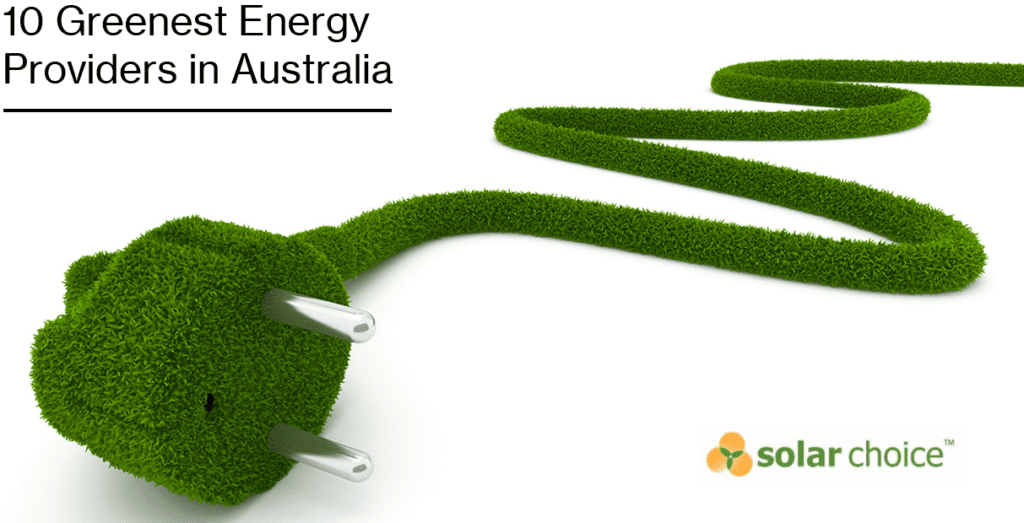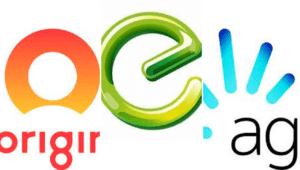The availability of renewable energy sourced from solar, wind and hydro is rapidly increasing right across Australia. At the same time, consumer demand for products that are sourced and produced with sustainability and the environment in mind is also on the rise.
This has fuelled the emergence of new, green energy providers to satisfy consumer demand to reduce their household carbon footprint and help do their bit as we move towards Net Zero carbon emissions. For households that can’t install rooftop solar power systems, the very next best thing is to purchase energy from an environmentally-friendly electricity provider.
But that isn’t as easy as it sounds as most of Australia’s energy production Is still heavily skewed to fossil fuel sources such as coal and gas. In this article, we’ll consider what makes an energy provider green, how to assess the green credentials of an energy provider and the cost impact of choosing a green energy provider.
We also include the definitive list of Australia’s greenest energy companies as compiled by Greenpeace.
What is a green energy provider?
Energy providers need to source or create electricity so they can sell it to retail customers. Some energy providers may simply choose to buy energy on the wholesale market, whilst others have entered into contracts to buy the output of renewable assets such as solar farms, wind farms or hydroelectricity plants. Some providers go one step further and own the power plants in a similar way to the biggest names in electricity have owned the majority of the coal and gas plants around Australia.
Whilst the actual electrons that flow into your home, may not actually be from a renewable source, if you support energy providers who focus on procuring renewable energy you are creating greater demand for this type of energy and reducing demand for energy created by fossil fuels.
There are many new and emerging energy providers with a focus on renewables, that also offer the option for customers to choose to purchase greener electricity, which is achieved primarily through offsetting programs.
Look for GreenPower
Many energy retailers offer access to GreenPower which is a national, government-accredited program that allows customers to displace (or offset) their standard electricity usage with certified renewable energy which is then added to the grid.
This ultimately leads to more investment in renewable energy projects and a shift away from fossil fuels as the main source of energy in Australia.
What does it cost to go green with your household energy?
It costs more to purchase green electricity directly or via offsets. Using Greenpower as an example, it is estimated that it will add 4 to 8 cents per kWh to your standard or current electricity rate. The additional cost of going green with your household energy will depend on your monthly usage.
What other factors should you consider?
Besides access to renewable energy, directly or indirectly via carbon offsets, there are a number of other things to look for in an energy provider to determine their green credentials.
Renewable Energy Assets: Does the retailer or parent company own solar farms, wind farm or hydroelectricity plants that bring clean power to the national grid?
Innovative products: Does the retailer offer new and innovative products that support renewable energy uptake, such as plans designed for households with electric cars?
Marketing stance: What is the company’s public position on renewable energy, and are they actively promoting green or sustainable energy production? Do they have any ‘dirty secrets’ around investments in or reliability on energy from fossil fuels? Look for a retailer that has ‘come clean’ and is transparent about their current position and future direction.
To help you choose a green energy provider, Greenpeace has done a lot of the legwork for you, ranking all energy providers in Australia based on their green credentials. We reproduce here the top 10 green energy providers from their most recent listing.
The top 10 green energy providers in Australia
The Green Electricity Guide by Greenpeace ranks nearly 50 energy providers in Australia from greenest to dirtiest based on factors such as carbon emissions, reliance on coal and overall climate impact.
Each energy provider is rated against the following criteria to generate a score:
- Providing clean, renewable energy
- Ending coal use by 2030
- Halting fossil fuel expansion
- Support for new, renewable energy
- Pollution and environmental harm
- Transparency in marketing
The list helps consumers choose energy providers with the best environmental credentials, that are helping Australia reduce its reliance on fossil fuels and showing a serious commitment to tackling climate change.
| Energy Retailer | Highlights | Operates In | Rating |
| 1. Enova Energy | The greenest electricity provider according to this list. Almost all energy sourced from distributed solar panels, and a social enterprise giving back to the community. | NSW and South East QLD | 5/5 |
| 2. Diamond Energy | Renewable electricity generator that owns over 1,000 rooftop solar installations, and the first retailer to offer an export tariff for home batteries. | VIC, NSW, SA and QLD | 5/5 |
| 3. Momentum Energy | Owned by Hydro Tasmania who generate mostly renewable electricity, though also own two large gas power stations. | VIC, NSW, QLD and SA | 4.5/5 |
| 4. Energy Locals | Mostly owned by a renewable energy investment fund, offering solar feed-in tariffs and smart meter installation and operation. | NSW, QLD, VIC, SA and TAS | 4.5/5 |
| 5. Aurora Energy | Owned by the Tasmanian Government who via Hydro Tasmania generate predominantly renewable electricity, though also own two gas power stations. | TAS | 4.5/5 |
| 6. Indigo Power | A white-label electricity retailer that partners with Energy Locals to supply energy to consumers. A community-owned social enterprise. | Eastern VIC and most of regional NSW | 4/5 |
| 7. CoPower | A white-label electricity retailer that partners with Energy Locals to supply energy to consumers. A member-based, cooperatively managed not-for-profit. | NSW, VIC, SA and QLD | 4/5 |
| 8. Nectr Energy | Offers some 100% renewable energy plans, solar tariff plans and solar/battery bundles. Subsidiary of Hanwha Group which is building two large solar farms in Australia. | NSW, QLD and SA | 4/5 |
| 9. Amber Electric | Encourages and supports customers in using more energy when wind and solar are powering the grid, and provides electricity to customers at wholesale prices with a flat fee to cover its operations. | NSW, QLD, SA, VIC and ACT | 4/5 |
| 10. Powershop | Previously owned by Meridian, a major renewable electricity generator, but recently acquired by global fossil fuel giant Shell. Will continue to contract renewable energy from Meridian. | VIC, NSW, South East QLD and SA | 4/5 |
Visit The Green Electricity Guide website to view the complete list.
What about the big electricity retailers?
Noteworthy for their presence at the very bottom of the list of Australia’s greenest energy providers are the most widely known and used energy companies in Australia, namely Origin Energy (ranked 44 of 48), Energy Australia (ranked 45 of 48) and AGL Energy (ranked last of 48).
These are the legacy fossil-fuel energy generators and retailers operating the largest coal-fired power stations in Australia, as well as oil and gas mining projects. To be fair, they have the longest road ahead to become green energy providers given where they started, and to their credit they are attempting to change (albeit slowly) with investments in renewable energy generation.
There are many options for households looking to go green
While Australia’s national grid on the whole could not be considered ‘green’, individual households have an increasing array of sustainable options for their electricity needs. Choosing to wholly offset carbon emissions from their energy usage is easier than ever before, with many retailers offering valid options.
The more people that choose to opt for greener energy, the more renewable energy projects there will be, and the more truly green energy that will be supplied to the national grid.
For many households, the cost of choosing a green electricity provider is a small price to pay for a cleaner, more sustainable future.
- Most Efficient Solar Panels in Australia - 3 May, 2022
- 10 Greenest Energy Providers in Australia - 3 March, 2022
- Solar Pool Pumps: Costs, Options and Benefits Explained - 1 November, 2021

